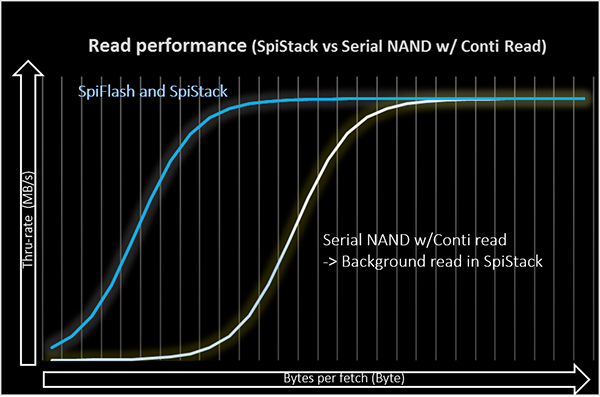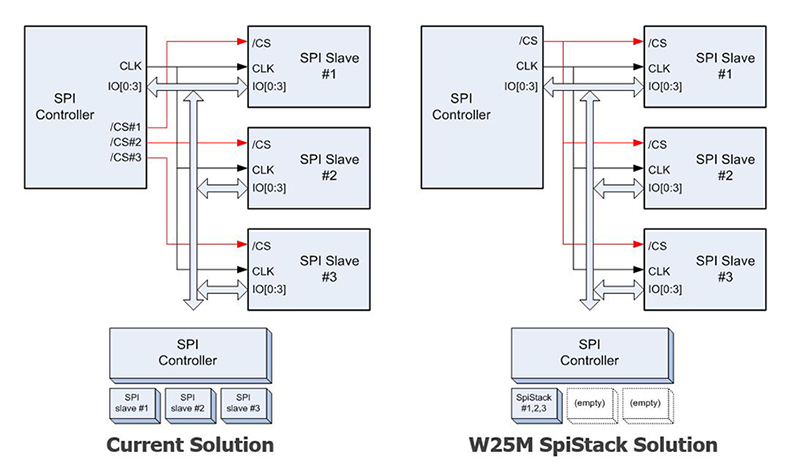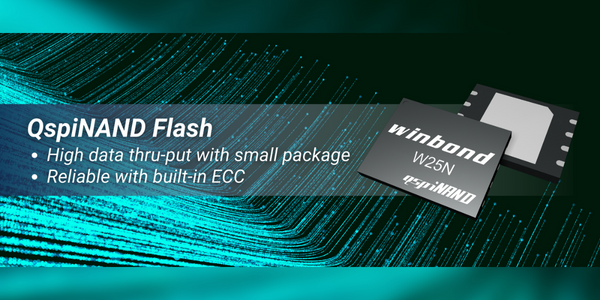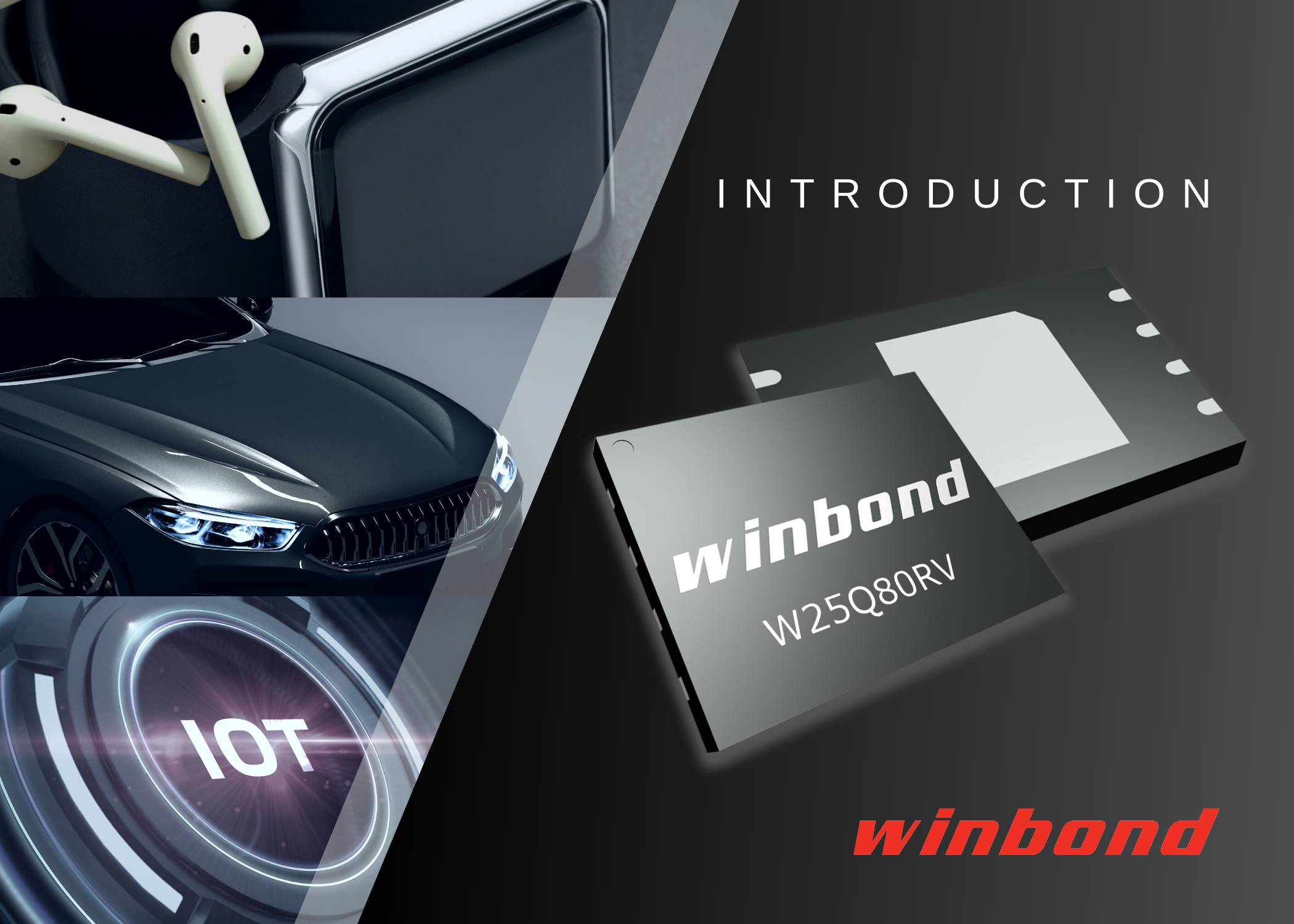Winbond is the first company to offer the new SpiStack® W25M Memory Series for “stacking” of homogeneous or heterogeneous flash, thus achieving memories of varying densities for code and data storage, while providing designers with flash solutions most appropriate for their design requirements.
SpiStack® architecture offers designers maximum flexibility in tailoring flash solutions to meet their specific memory-density and application requirements.
The W25M Series provides a wide range of densities in the well-established 8-pin package to which designers are accustomed. W25M memories also feature the popular, multi-IO SpiFlash® interface featuring the popular Serial Peripheral Interface (SPI) and command set.
SpiStack® homogeneous memories are formed by stacking SpiFlash dies – for example, two 256Mb dies combining to form a single SpiFlash 512Mb NOR memory in the industry-standard 8-pin 8x6mm WSON package. This stacked product, W25M512JV, is also available now in 16-pin SOIC or 24-pad BGA packages.
SpiStack® heterogeneous memories are formed by stacking a NOR die with a NAND die, such as a 64Mb SpiFlash NOR blended with a 1Gb Serial NAND die, which gives designers the flexibility to store code in the NOR die and data in the NAND memory.
SEARCH FOR THE PRODUCT SPEC
Read more: How improved die-stacking technology reduces pin count, board footprint and system complexity
Why Stacked Die

Individual components forming the stacked solution have clock rates up to 104MHz achieving an equivalent of 416MHz (50M-Byte/S transfer rate) when using Quad-SPI. Multiple SpiFlash dies, each with density ranging from 16Mb to 2Gb, can be stacked with any combination of NOR and NAND dies. A NOR die can be used to store the boot code, which offers better endurance and retention, and fast random access time. A NAND memory can be used to store data and to back up the boot code.
A NAND die can also be used to upload the working memory data quickly whenever the system power goes down, since its programming time is much faster than NOR. It improves the system quality by storing up-to-date code residing in the working memory for later usage.
SpiStack® supports concurrent operation so that code execution is not interrupted for data updates. All SpiStack® features are supported so that backward compatibility is conserved with the addition of a simple software die select instruction (C2h) and a factory-assigned die ID number.


W25M SpiStack Family
- Stack flash dies to form a higher density part of choice
- User can select based on specific density requirement
- Serial Peripheral Interface (SPI)
- Backward compatible to existing SpiFlash
Homogeneous stacking – Two or more dies
- NOR dies combined using 1Mb to 256M-bit dies
- NAND dies combined using 512Mb to 2Gb dies
Heterogeneous stacking – Two or more dies
- NOR and NAND dies stacked together
Concurrent Operation
- Read operation on one die
- Write / Erase operation on another die + Code execution not interrupted for data updates
Wide Range of Applications
- Mobile phones, Cameras, Printer, Servers, Set Top Box
Automotive, Bluetooth, GPS, Digital-TV, DSP, FPGA
WLAN, DSL/Cable Modem, Gateway, Industrial and more




